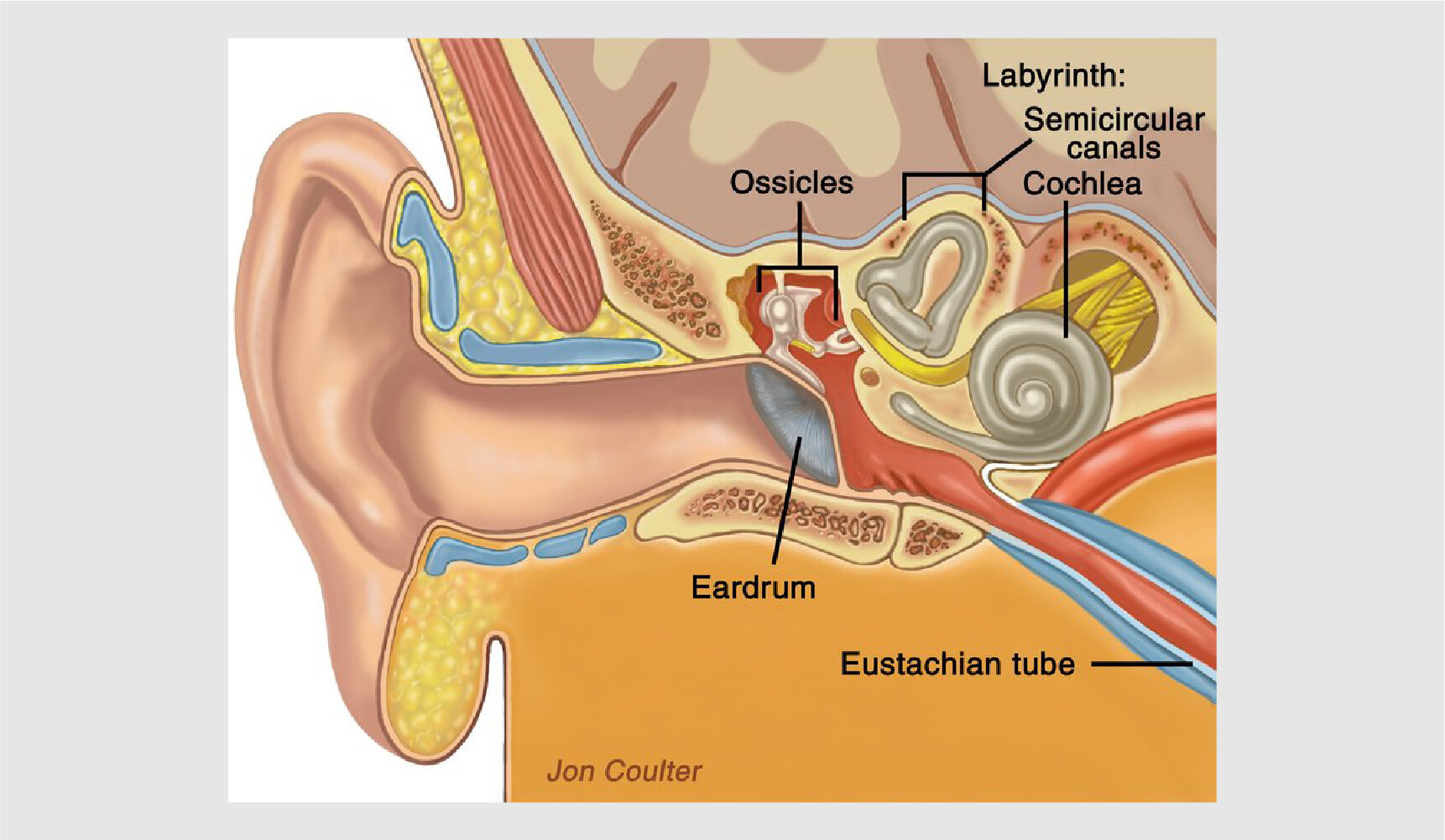Causes of Ménière’s Disease
Even though the exact causes of Ménière’s disease are not clearly known, symptoms are believed to arise from the buildup of fluid in the chambers of the inner ear.
According to the National Institute on Deafness and Other Communication Disorders (NIDCD), the disorder is physically caused by a buildup of a fluid called endolymph in the compartments of the inner ear, called the labyrinth. The labyrinth contains the organs of balance (the semicircular canals and otolithic organs) and hearing (the cochlea).
The labyrinth has two sections: the bony labyrinth and the membranous labyrinth, the second of which is filled with endolymph which, in the balance organs, stimulates receptors as the body moves. The receptors then send signals to the brain about the body’s position and movement. In the cochlea, fluid is compressed in response to sound vibrations, which stimulates sensory cells that send signals to the brain.
This excess fluid–beyond the normal amount of fluid that exists in the cochlea–affects both balance and hearing. The cause of the fluid buildup is not yet completely understood. Some researchers believe it is related to the same blood vessel constrictions that lead to migraine headaches; others say it might be due to an autoimmune condition, a viral infection, an allergic reaction, or head trauma. Ménière’s disease appears to have a hereditary component, so there may be a gene mutation connected to the regulation of endolymph fluid.

